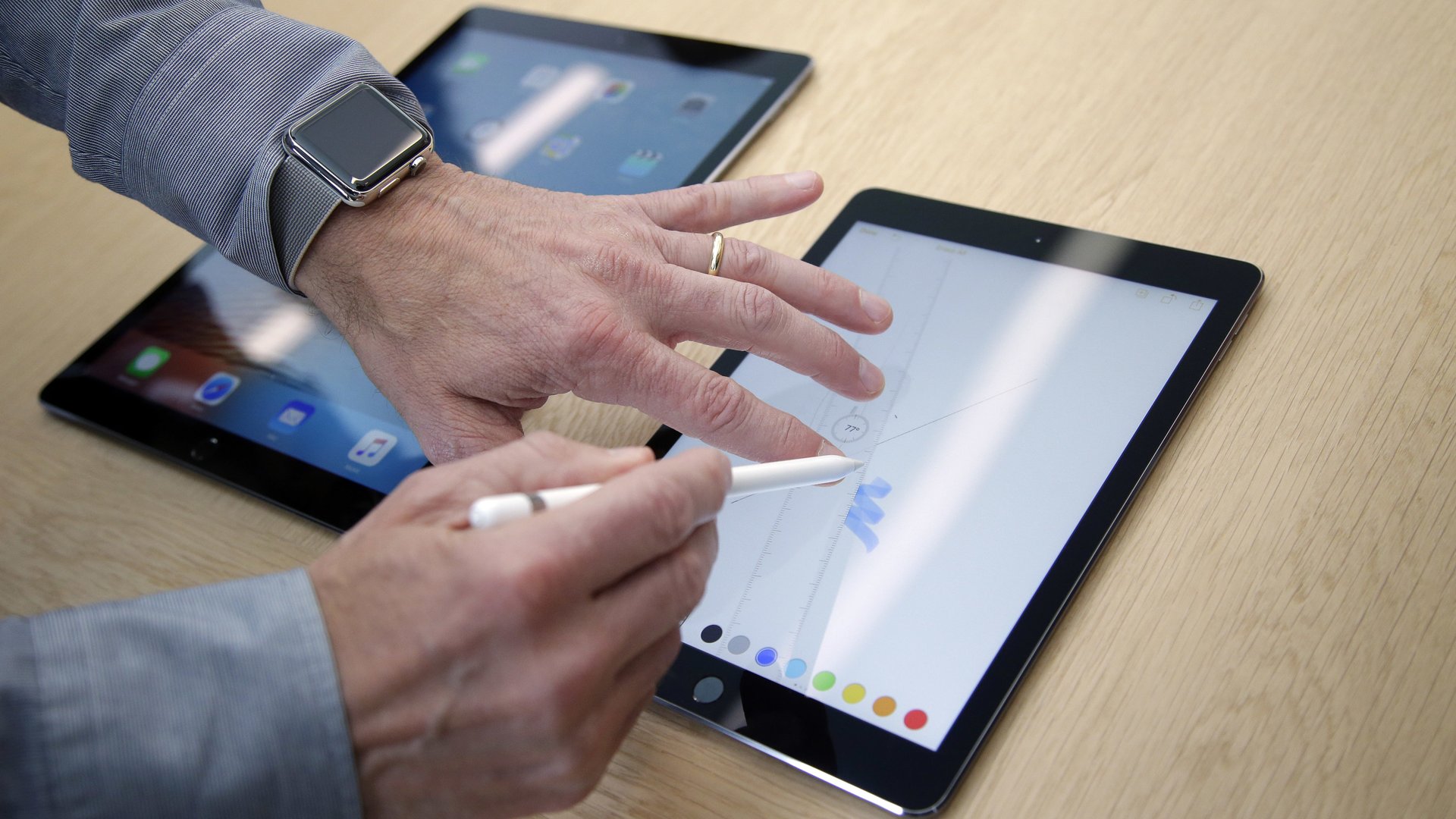Seven years after its launch, it’s still not entirely clear what an iPad is for
In his customary mock-turtleneck and dad jeans, a gaunt Steve Jobs introduced the iPad to the world on this day in 2010. “All of us use laptops and smartphones now,” Jobs said. “And the question has arisen lately: Is there room for a third category of devices in the middle?”


In his customary mock-turtleneck and dad jeans, a gaunt Steve Jobs introduced the iPad to the world on this day in 2010. “All of us use laptops and smartphones now,” Jobs said. “And the question has arisen lately: Is there room for a third category of devices in the middle?”
Obviously, Apple’s answer to this question was the iPad, but starting off the device’s journey with a question about its very existence seems to have been a bit of prolepsis around how successful it would be. “The bar is pretty high,” Jobs said. “In order to really create a category of new devices, those devices are going to have to be far better at doing some… really important things, better than the laptop, better than the smartphone.”
The iPad has been a mixed bag, because in some ways, it has achieved what Jobs asked of it, but it also hasn’t really proven to be an enduring hit, unlike the iPhone.
For a while, the iPad was Apple’s second-largest business line, after the iPhone. But considering that the iPhone has routinely generated between double and five times the revenue that the iPad has, it was very much a distant second. In recent quarters, the iPad has drifted into fourth place—in terms of revenue—behind Apple’s computer business and its burgeoning services business (including apps, cloud storage, music, games, and insurance).
The Mac has started generating more revenue for Apple than the iPad:
Even though Apple has pretty much consistently sold far fewer Macs than iPads since the tablet’s original launch.
This can partly be explained by the fact that iPads have generally been cheaper than most Macs. Over time, the price of the iPad has fallen dramatically, as Apple has introduced smaller versions (the iPad Mini), whereas the cheapest new laptop Apple produced was always around $800, and the cheapest desktop around $500—although that didn’t include a monitor, keyboard, or mouse. (The recent spike in iPad prices can be attributed to the launch of the iPad Pro in 2015, originally a 12-inch, $800-plus machine that now comes in a more reasonable, and affordable, 9.7-inch size.)
As much as Jobs hailed the iPad as the beginning of the “Post-PC” era, Mac sales have remained stubbornly consistent for Apple over the last seven years. In an interview with Recode’s Walt Mossberg and Kara Swisher at the D8 Conference in 2010, Jobs said he saw computers like trucks—once the most commonplace vehicle on the road, but eventually outnumbered by more consumer-friendly vehicles such as cars. So, too, computers would be outnumbered by smartphones and tablets. Although we’re only seven years into this era, it does seem that the real winner has been the smartphone.
Sales of tablets, overall, are shrinking. That may be, as Jobs suggested, because they don’t do much that other devices can’t do better. They’re great for casual web browsing, the occasional tweet or episode of The Young Pope, but for anything longer, you want something with more processing power, better inputs, and better screen resolution. Otherwise, you want something lighter and less cumbersome—smartphones are getting bigger (the iPhone at the time of the iPad’s launch had a 3.5-inch screen; the iPhone 7 Plus has a 5.5-inch screen), but they’re still far easier to carry around than a tablet, and generally do everything that a tablet can.
Apple now is marketing its newer iPads as productivity tools, even as full-fledged computers. The company’s stylus, the Pencil, helps creative professionals design products or take notes on their iPads, and the new keyboard case means that you could theoretically write stories, scan spreadsheets, or create presentations from an iPad as you would a computer. But it’s still a lot easier to type on most desktop or laptop keyboards and use a mouse to interact with information than to use your finger or a stylus. The iPad seems stuck in the same existential quandary about what it actually is that it did when it was first released.
While it’s not right to call time on the iPad yet, it’s worth considering where Apple should focus its energy. Right now, the overwhelming majority of its revenue—and profit—comes from the iPhone. But sales have started to shrink in recent quarters, and the designs are starting to feel monotonous, and the company’s recent efforts to diversify its revenue streams, such as the Apple Watch, have not exactly set the world alight. Apple is condensing its laptop line, and may well do the same to its desktops as well, and it’s possible that the company will reduce the number of iPad models from the five it currently sells.
The iPad has always felt like an awkward middle ground between phones and laptops, especially in a time when we probably need fewer screens in our lives. And it’s not clear whether that will change any time soon.